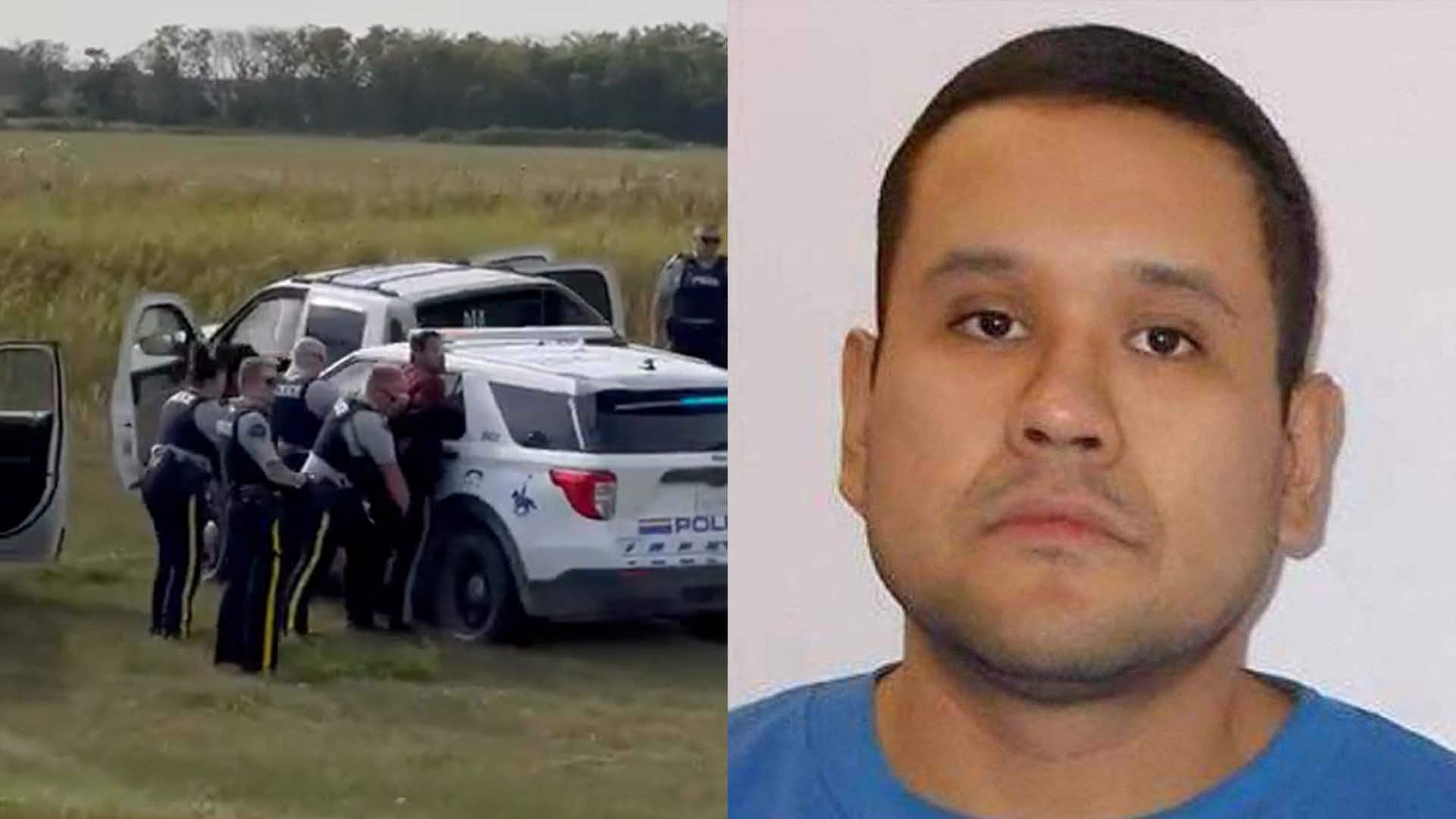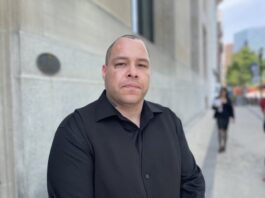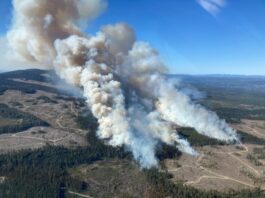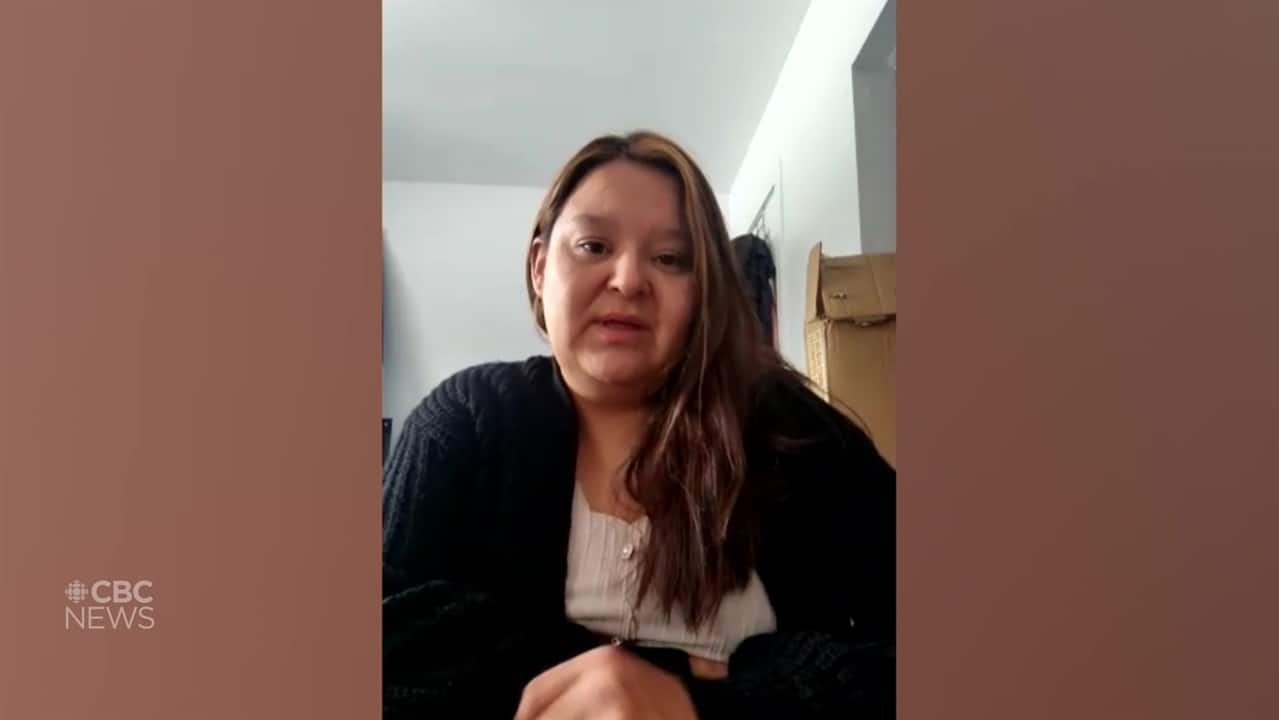
One major question remains after a public inquest spent weeks examining the stabbing massacre at James Smith Cree Nation: How did the killer die?
The answer is expected after the conclusion of a week-long public coroner’s inquest beginning in Saskatoon on Monday. It is meant to establish when, where and how Myles Sanderson, a James Smith (JSCN) community member, died in police custody.
“Pretty much just only have one question,” said Vanessa Burns, Sanderson’s ex-partner. “How he passed away.”
Sanderson, 32, killed 11 people at JSCN and the neighbouring village of Weldon on Sept. 4, 2022. He was arrested in a ditch off the side of a highway near Rosthern, Sask., three days after the killings, but collapsed soon after. Police say he went into medical distress.
Sanderson was transported to the Royal University Hospital in Saskatoon and pronounced dead the same day.
Burns spoke at the previous inquest — which began on Jan. 15 and concluded with jury recommendations on Feb. 1 — about the years she spent as a victim of Sanderson’s domestic violence.
Heading into this inquest, she says she wants to learn about what happened when Sanderson died, calling those details the “missing pieces” of the tragedy.
“I feel like it’s time for me and my family to start moving on and healing,” she said.
Vanessa Burns was Myles Sanderson’s common-law partner for more than a decade. She plans to attend the inquest into his death to find out how he died. Sanderson killed her father and stabbed her mother.
In the weeks following Sanderson’s death, Saskatchewan’s chief coroner, Clive Weighill, said details on the cause of death would not be released until this public inquest.
However, he did say that preliminary findings ruled out external blunt force trauma. He reiterated that in an interview with CBC News on Thursday.
Shortly after Sanderson’s death, a senior government official briefed on it by law enforcement said Sanderson died after consuming pills just before his arrest. Multiple police, government and health sources have told CBC News he consumed drugs before police took him into custody.
Myles Sanderson, the man accused of killing multiple people in a string of stabbings in Saskatchewan Sunday, was taken into custody late Wednesday afternoon and died sometime after that.
What will happen at the inquest?
A coroner’s inquest is required by law when someone dies while in police custody, unless the coroner is certain the person’s death was due to natural causes and not preventable.
Weighill told CBC he believes 12 witnesses will speak at the inquest — a few more than is usual for such proceedings. Six jurors will hear them and, at the inquest’s end, provide their findings on Sanderson’s death, and have an opportunity to lay out recommendations to prevent similar deaths in the future. However, their recommendations are non-binding.
The arresting officers and the officers who forced Sanderson off the road are among the main witnesses expected to speak. A forensic pathologist is also expected to give an opinion on the cause of death, including a toxicology report.
Sanderson’s mother will have standing, meaning she can question the witnesses. The federal government will have standing on behalf of the RCMP.
Weighill says the inquest is not likely to analyze Sanderson’s past — some inquests do examine the subject’s past, while others don’t, he said — because it was discussed in the previous proceeding.
The details from the previous inquest, and its findings, aren’t expected to play a role in this one.
“What happened on James Smith on Sept. 4 is completely different to what’s happened to him [Sanderson] when he passed away,” Weighill said.
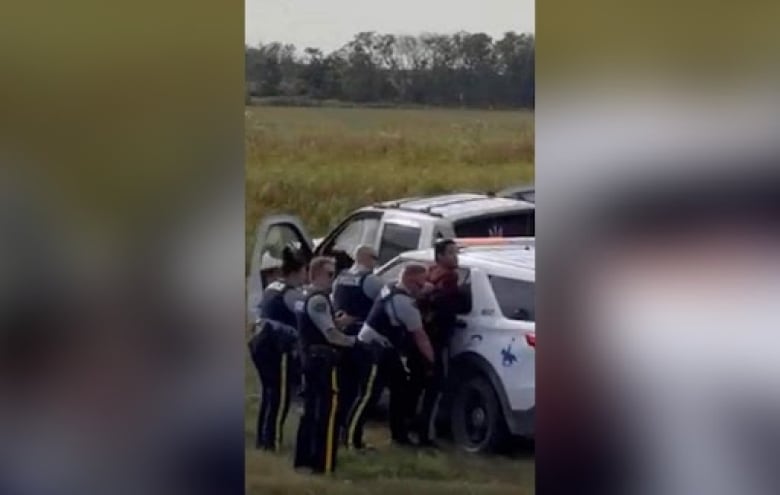
The jury’s recommendations
That narrowed focus on the specifics of a single case can hinder jury recommendations from having a meaningful effect, according to Mandi Gray, assistant sociology professor at Trent University in Ontario and a public inquest expert, specifically involving Indigenous people.
Gray said it’s also critical that inquests consider how people in custody are treated medically, and the role racial and cultural identity might play in the cause of death.
“There’s been a number of cases, especially for Indigenous people who have been criminalized, a lot of discriminatory stereotypes or disregard for their well-being that have resulted in death,” she said, “especially when somebody’s been involved with a very horrific crime —how that shapes perceptions on deserving and undeserving of medical help.”
This article is from from cbc.ca (CBC NEWS CANADA)

